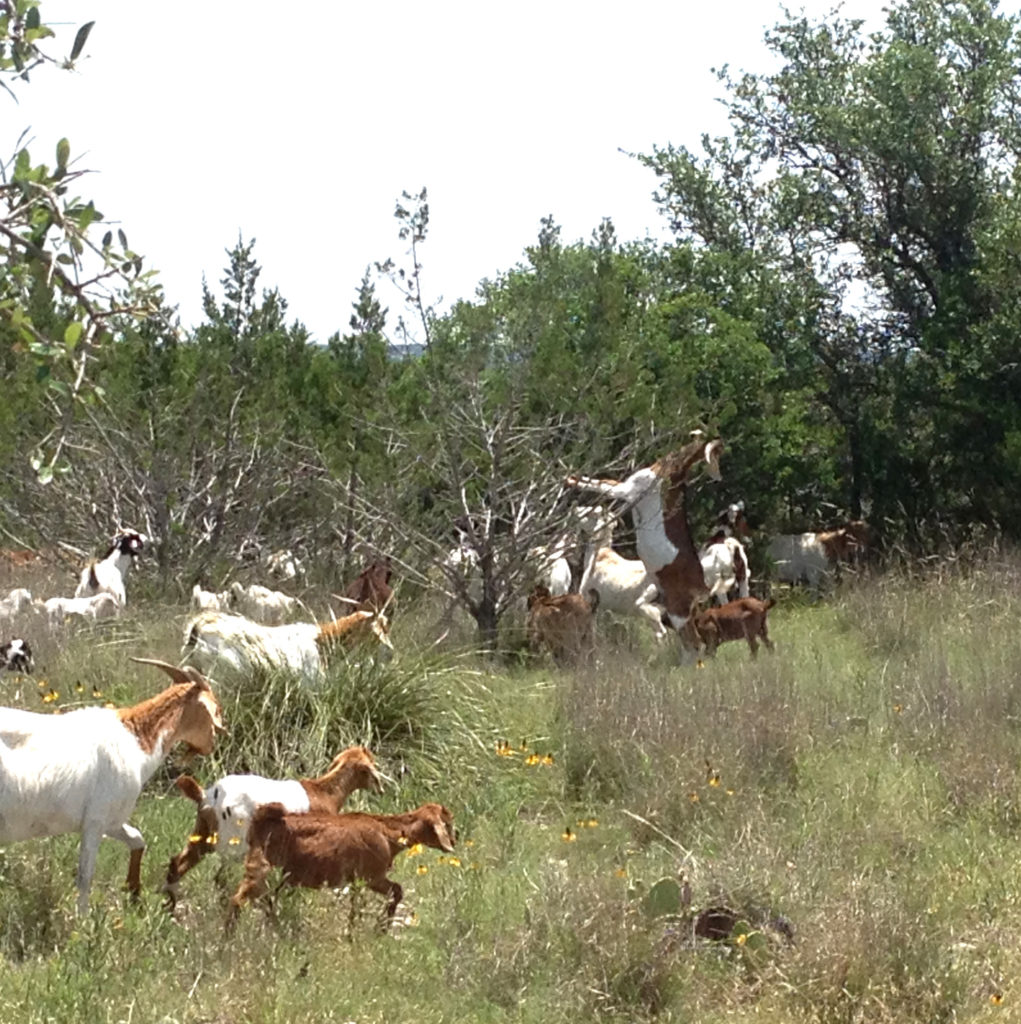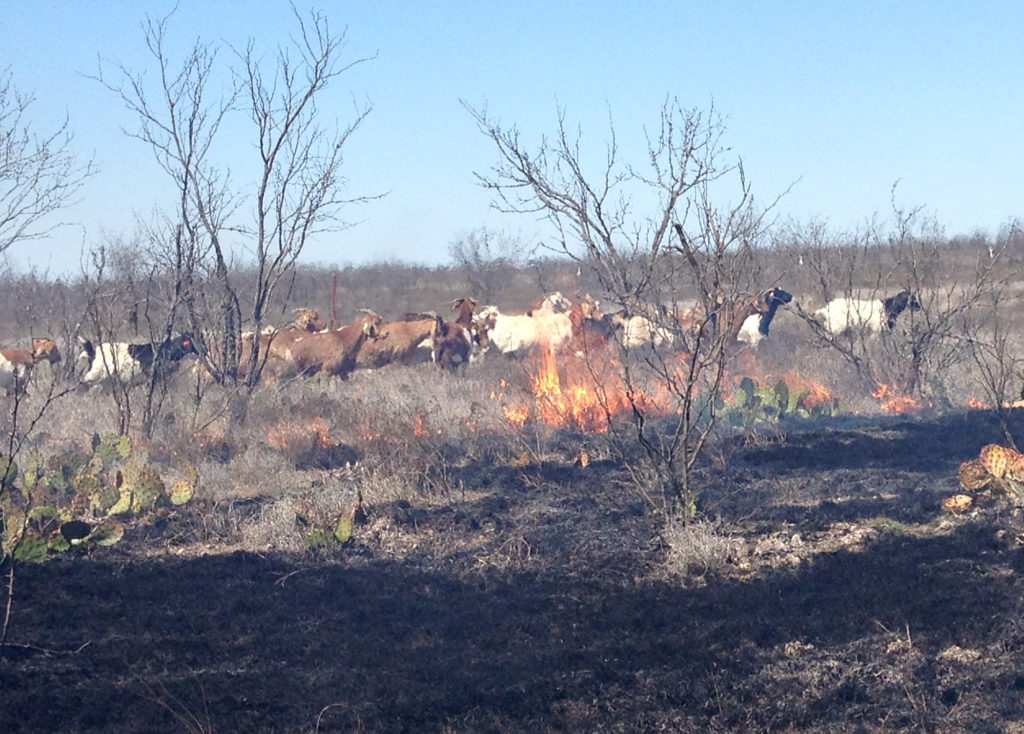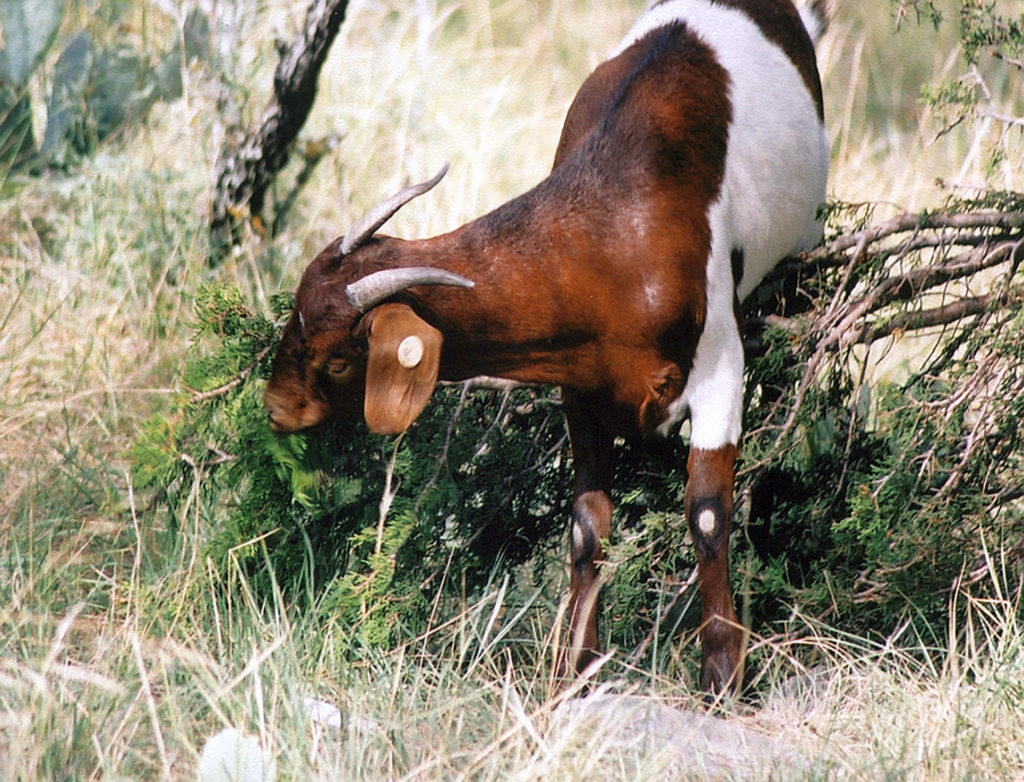Researchers to combine fire, mixed-species grazing to answer livestock production issues
5-year, $10 million grant led by Texas A&M AgriLife Research

COLLEGE STATION – Building on more than a decade of stakeholder interactions, a team of Great Plains scientists is rewriting the playbook for livestock production utilizing fire and mixed animal species to graze the land.
The team, led by Bradford Wilcox, Ph.D., Texas A&M AgriLife Research ecologist in the Texas A&M University Department of Ecosystem Science and Management, College Station, will work under a five-year, $10 million grant from the U.S. Department of Agriculture National Institute of Food and Agriculture, NIFA, Sustainable Agricultural Systems program.
The project, Enhancing Livestock Production from Rangelands in the Great Plains, will facilitate adoption of management practices to increase food production and more sustainable rangelands.
Joining Wilcox are a number of experts, including: John Walker, Ph.D., AgriLife Research center director, and Morgan Treadwell, Ph.D., Texas A&M AgriLife Extension Service range specialist, both in San Angelo; Ben Wu, Ph.D., AgriLife Research rangeland ecologist, College Station; Sam Fuhlendorf, Ph.D., and Laura Goodman, Ph.D., Oklahoma State University; and Dirac Twidwell, Ph.D., University of Nebraska.
Landscape challenges
“Livestock production landscapes are under stress as a result of environmental changes, including woody plant encroachment, an increasingly extreme climate and the increasing wildfires,” Wilcox said.
NIFA recognizes the challenges and vulnerabilities happening with livestock production, Twidwell said, and this grant is a concerted effort to better deal with those now and in the future.
“Not only are those huge challenges, but they are common to the rangeland profession across a fourth of the nation,” he said. “That’s why we are linking together the most productive rangeland sites from Texas to Nebraska in this project.”

Utilizing their combined research experiences and work with landholders, the scientists have identified management strategies they believe hold promise for maintaining and possibly increasing livestock production across the Great Plains, Wilcox said.
In 1965, there were 4.6 million goats in the Texas Hill Country, and juniper encroachment and wildfires were not a problem, Walker said. Today, there are less than 1 million goats in Texas, and both juniper encroachment and wildfires are a concern.
“Brush encroachment has long been a problem in Texas, and there is a saying that each generation has to buy the ranch again because the cost of clearing brush to keep ranching productive costs almost as much as the original purchase price of the property,” he said.
Controlling brush was once mostly a southwestern problem, but today it is threatening rangelands in the Great Plains, affecting places as far north as the Dakotas, Walker said.
A goal is to change the culture of rangeland managers through interactive learning between ranchers in Nebraska and Oklahoma, where prescribed fire has a long history of use, and Texas, where goat production is a well-established ranch enterprise.
New way of thinking
“A new management paradigm needs to be developed, one based on the restoration of fire and grazing regimes that will maintain ecosystem structure, function and resilience,” Wilcox said. “Traditional grazing practices have created a homogeneous structure, by encouraging grazers to use the entire landscape equally.”
Woody plant encroachment presents challenges to landowners and agricultural producers by threatening the productivity of rangelands and their ability to provide ecosystem services, he said. Land managers find themselves caught between the high cost of traditional woody plant control and the loss of forage if they allow the woody plants to expand.
“We found in our research and extensive work with stakeholders that implementation of a regular burning program is the only viable way to maintain grasslands with good forage quality and quantity,” Wilcox said. “This course of action is not without challenges, though. Much of the Great Plains region, with the exception of the tallgrass prairie, lacks a ‘burning culture.’”
He said the science behind this plan is: as woody plants increase in size, density and distribution, the productivity and continuity of dominant grasses are reduced, thereby lowering fire intensity and, with it, woody plant mortality.
“One potential solution is to remove grazers so plant biomass can accumulate,” Wilcox said. “But this strategy leads to a fuel-versus-forage conundrum for managers. This can be resolved through a combination of patch burning and grazing known as pyric herbivory.”
Pyric herbivory differs from traditional grazing practices by creating a shifting mosaic of out-of-phase landscape patches – newly burned, recently burned with regrowth and unburned areas – to increase the landscape heterogeneity.
“Because grazing animals spend most of their time foraging in recently burned patches with regrowth, and largely ignore patches that have not been burned, fire and grazing disturbances can be localized,” Wilcox said. “This allows for greater accumulation of plant biomass in unburned patches than appears to be possible under traditional grazing practices.”

In addition, he said, pyric herbivory will be an effective strategy for resolving the forage quality versus quantity issue.
Plants in recently burned patches have higher crude protein content and are highly digestible, which can decrease the need for protein supplements often fed to livestock when forage plants are dormant, Goodman said. Unburned patches have a greater quantity of forage so the animals can select among patches to meet dietary needs.
“This variation in time-since-fire also increases plant species diversity and plant structural differences between patches, which is important for wildlife like quail and pollinators,” she said. “Attracting livestock to recently burned patches also allows plants on unburned patches a rest from grazing, helping them to be more vigorous and resilient during drought.”
Moving forward
The researchers said they will include experimental landscape-scale tests of best management strategies, focused decision-support tools and better-informed producer groups, which will lead to viable adaptation and mitigation strategies producers can implement to cope with the environmental challenges.
Aiding the research will be the inclusion of education and extension aspects to ensure that not only are practical knowledge, useful information and workable strategies for rangeland conservation and management developed, but it is disseminated to producers, resource managers, agribusiness leaders and the public.
Wilcox said research and demonstration centers will be established across the Great Plains where best management practices for increasing the resilience of livestock production operations can be evaluated and exhibited.
“These seven centers will enable us to both critically evaluate the effectiveness of pyric herbivory and mixed-species grazing and demonstrate their practical application,” he said. “They will also serve as training sites.”
Goodman said they are working with cooperator ranchers from across the region who are already using either pyric herbivory and or mixed-species grazing to manage their woody plants. These ranchers will help show other livestock producers how this can work on their own ranches.
In partnerships with Demonstration Ranches across the region, the researchers will engage with current and future land managers, natural resource professionals and the general public to build educational programs that will overcome social barriers for the use of prescribed fire and mixed species grazing.


